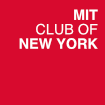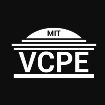What you’re missing about activity based working

Putting the “activity” in “activity based working"
The New Year is an exciting time. Whether you’re beginning a new semester, formulating resolutions, or just enjoying the feeling of a fresh start, this is a moment to think about our past and the future, our bodies and our minds. In light of this, we’re spending this edition on workplace wellness.
At PLASTARC, we’re big advocates of enabling employees to work when, where, and how they want. When workers have greater authority to manage their environment, they exhibit more ownership over their work, interact with their colleagues in more diverse and constructive ways, and, yes, focus more readily on their wellbeing. This autonomy drives better health and fitness choices during the workday. In addition, job autonomy has been positively related to self-fulfillment, organizational commitment, and increased flexibility.
Why is worker wellness such a big deal for employers? Well, aside from wanting to be seen as engaged and interested managers, informed employers know that wellness yields performance. In fact, an active body is quite literally an active mind: our brains process information differently when we’re in motion versus when we’re still. Movement leads directly to increased attention and memory, and other wins for both employee and employer.
That all sounds great, right? So how can employers go about offering increased flexibility—and, by extension, increased wellness—to their employees? We dig deeper below.
On our minds
ABW: these three little letters stand for the revolutionary office use typology activity based working, which eschews dedicated desks and seats for each employee in favor of diverse activity areas suited for different tasks. Depending on whether your next hour of work will entail a sensitive phone call, a group discussion, or some focused writing, you could choose between heading to a private phone booth, a cafe-type meeting area, or a standing desk. Sound refreshing? ABW is our phrase *du mois*, but it’s also been our *modus operandi* for years. Originally a Dutch concept, ABW has suffered frequent misinterpretation in the US, where its propensity to save companies space (and therefore money) has often overshadowed its founding goals of engendering employee productivity and satisfaction. If you think you've heard this one before, you're right. The social-centric economic structures of Europe have brought us many fresh workplace ideas, including the German-born Bürolandschaft concept, which intended to bring more organic desk groupings and elements of privacy to assembly line-style open offices with identical desks—but instead wound up spawning the now dreaded cubicle. While we wouldn’t assert that the myriad goals ABW promises are reachable overnight, or that they can be gained through anything less than a complete commitment to understanding and reshaping organizational culture as well as physical space, they are very achievable and very real. We know because we’ve been committed to helping organizations understand the connections between workplace and wellness for years. Some recent hightlights below... We are proud to have brought the topic of wellness at work to the NYC design community in the early spring of 2015, when Melissa Marsh moderated a panel discussion about Delos Living’s WELL building standard at a packed International Interior Design Association (IIDA) forum. This was fully six months before the WELL partnership with the USGBC was announced at Greenbuild, and before Delos won the 2014 CoreNet Global Innovator’s Award (PLASTARC was on the jury). A bit more recently, we were thrilled to host our friends at the Center for Active Design (CFAD) at a summer social event we organized in 2016. CFAD celebrated their 10th anniversary with the launch of Fitwel, a certification that uses 60 low-cost, high-impact strategies like location lighting, circulation, and workstation design to achieve healthier workplaces. Back at WorkTech 2015 West Coast, Melissa presented The Quantified Workplace: Applications & Opportunities, about how new workplace tech tools for self-quantification are allowing us fresh perspectives on, and greater awareness of, our health and habits. In a Tradeline article last October, Melissa spoke about using social data in new ways: in addition to business promotion, she said, user feedback on everything from workplace snack offerings to office temperature can be harnessed to make better planning decisions.
From the archives
In Case You Missed It

DisruptHR New York
Last month’s energetic Disrupt event focused on the ability of good workplace design to enable healthier and happier employees and customers.

I Love This Place! Exceptional Design Driven by Social Research
This December program highlighted fabulous projects that successfully integrate social science with both the built environment and the business of architecture.

Research Group on Collaborative Spaces
We were thrilled to take part in the first international RGCS Symposium, "Work and Workplace Transformations: Between Communities, Doing, and Entrepreneurship," in Paris in December.

WorkTech 16 Paris
Also last month, we joined this two-day convening of leading international building technology and workplace wellbeing experts in discussions about the future of where and how we work.
Looking Ahead
Events—whether attending, organizing, or presenting—are essential to PLASTARC. We see these as opportunities for our team to learn and grow; meanwhile, we get a chance to spread the word about the importance of workplaces that work for people. Our calendar for the next few weeks includes...



